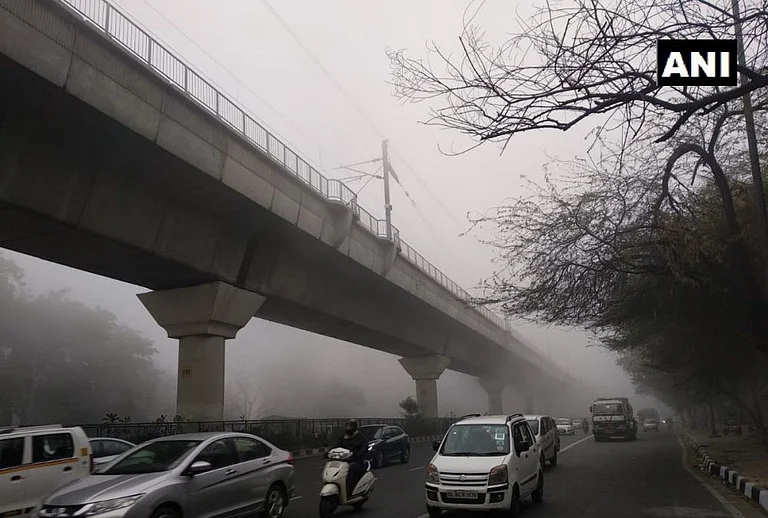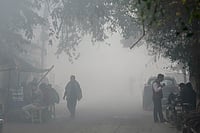
Delhi experiences mainly clear skies with persistent mist and haze; temperatures 29-31°C with morning minimums 15-17°C
AQI remains in the 'very poor' category at 309-324; areas like Narela (382), Wazirpur (385), Bawana show hazardous levels
Weak winds and stagnant conditions trap pollutants; PM2.5 at 168 µg/m³, eleven times WHO WHO-recommended limit.
Improvement expected from November 5 onwards as a fresh western disturbance brings cloud cover and enhanced wind activity.
Delhi's air quality has deteriorated sharply, remaining in the 'very poor' category on November 3 with an overall Air Quality Index of around 309-324, down marginally from Sunday's reading of 377. Despite mainly clear atmospheric conditions, stagnant wind patterns have created unfavorable dispersion conditions, causing pollutants to accumulate near the surface. The temperature in Delhi today shows maximum readings around 30-31°C with minimum temperatures between 15-17°C, remaining near seasonal norms. Morning mist and shallow fog persist across the city, particularly during early hours before dissipating with daytime heating.
Delhi: Area-Wise Pollution Analysis
The city's air quality (AQI) varies significantly by location, reflecting localized pollution sources and traffic congestion patterns. The worst-affected areas include Wazirpur (385), Narela (386), Bawana (371), Burari Crossing (384), and Goutampuri (408), all recording hazardous levels exceeding 400 in some instances. Central areas show relatively better conditions, with ITO recording the lowest reading at 99 (satisfactory category) and Lodhi Road at 210 (poor category). Neighboring NCR cities face similar challenges, with Ghaziabad at 360, Noida at 289-311, and Gurugram at 201-304.
Health Impact and Particulate Levels
The current pollution level is equivalent to smoking nearly eight cigarettes daily, according to air quality monitors. PM2.5 concentration stands at 168 µg/m³, significantly exceeding the WHO guideline of 15 µg/m³—approximately 11.6 times above recommended limits. PM10 levels measured around 316 µg/m³ on recent mornings, further indicating elevated particulate pollution. Health experts warn that this prolonged exposure increases risk for respiratory diseases, exacerbates asthma, and can trigger chronic cough, sore throat, and eye irritation even in otherwise healthy adults. Over time, persistent poor air quality may lead to cardiovascular issues, a higher likelihood of lung infections, and, in extreme cases, shorten life expectancy.
Future Forecast and Expected Improvement
The weather forecast shows mainly clear conditions with mist/haze likely to persist through No vember 7. However, improvement is anticipated from November 5 onwards as a fresh western disturbance brings cloud cover and stronger winds that will enhance atmospheric mixing and pollutant dispersion. Wind speeds of 10-20 kmph from northwest to westerly directions will help reduce ground-level concentrations. Until conditions improve, sensitive groups, including children, elderly persons, and those with respiratory conditions, should limit outdoor activities and use N95 masks during essential outings.





























